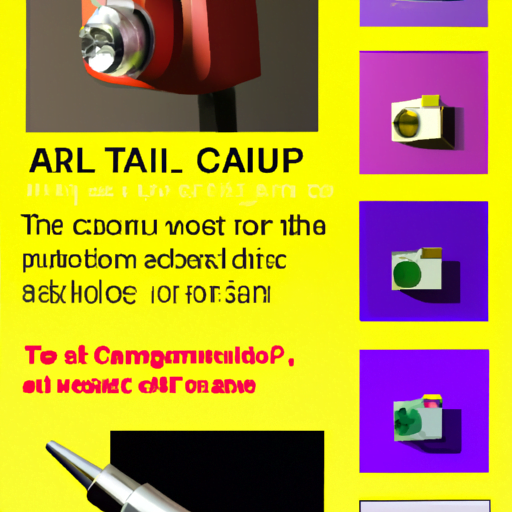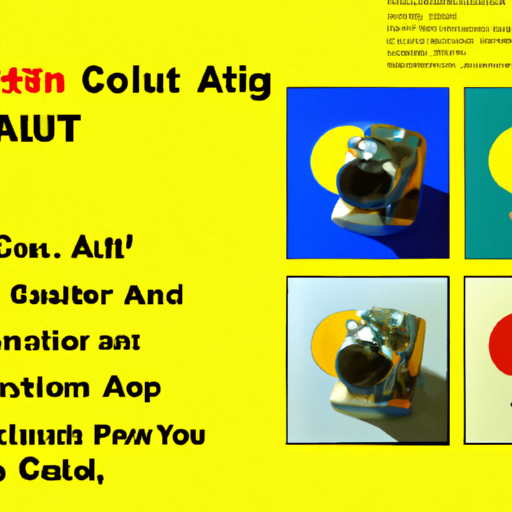
-
Table of Contents
- Designing Effective Buttons and CTA (Call-to-Action) Elements
- The Importance of Effective Buttons and CTAs
- Key Principles for Designing Effective Buttons and CTAs
- 1. Clarity and Conciseness
- 2. Visual Hierarchy
- 3. Consistency
- 4. Accessibility
- 5. Size and Placement
- Best Practices for Designing Effective Buttons and CTAs
- 1. Use Contrasting Colors
- 2. Incorporate White Space
- 3. Use Action-Oriented Language
- 4. Test Different Designs
- 5. Leverage Social Proof
- Case Studies and Statistics
- Case Study: Slack
- Case Study: Basecamp
- Statistic: 47% of Websites Have Poor Button Contrast
- Summary
Designing Effective Buttons and CTA (Call-to-Action) Elements

Buttons and call-to-action (CTA) elements are crucial components of any website or application. They serve as the gateway for users to take desired actions, such as making a purchase, signing up for a newsletter, or downloading an app. However, designing effective buttons and CTAs is not as simple as it may seem. In this article, we will explore the key principles and best practices for creating compelling buttons and CTAs that drive conversions and improve user experience.
The Importance of Effective Buttons and CTAs
Buttons and CTAs play a vital role in guiding users through the desired user journey. They act as signposts, directing users towards the next step and encouraging them to take action. A well-designed button or CTA can significantly impact conversion rates and user engagement. On the other hand, a poorly designed or confusing button can lead to frustration and abandonment.
According to a study by Nielsen Norman Group, users spend an average of 10-20 seconds on a webpage before deciding whether to stay or leave. During this short window of time, buttons and CTAs need to capture users’ attention, communicate the value proposition, and entice them to take action.
Key Principles for Designing Effective Buttons and CTAs
When designing buttons and CTAs, it is essential to consider the following principles:
1. Clarity and Conciseness
A clear and concise message is crucial for effective buttons and CTAs. Users should be able to understand the purpose of the button at a glance. Use concise and action-oriented language that clearly communicates what will happen when the button is clicked. For example, instead of using generic labels like “Submit” or “Click Here,” use specific and descriptive labels like “Buy Now” or “Download Your Free Guide.”
2. Visual Hierarchy
Visual hierarchy helps users quickly identify the most important elements on a page. Buttons and CTAs should stand out from other elements and draw attention. Use contrasting colors, size, and placement to create a visual distinction. For example, a brightly colored button placed strategically on a page with a neutral background will naturally attract attention.
3. Consistency
Consistency is key to creating a cohesive user experience. Buttons and CTAs should have a consistent design across the website or application. This includes using the same color scheme, typography, and visual style. Consistency helps users recognize and understand the purpose of buttons and CTAs, reducing cognitive load and improving usability.
4. Accessibility
Accessibility is an essential consideration when designing buttons and CTAs. Ensure that buttons have sufficient color contrast to be easily distinguishable for users with visual impairments. Additionally, provide alternative text for screen readers to convey the purpose of the button to visually impaired users. Following accessibility guidelines not only improves the user experience for all users but also ensures compliance with legal requirements.
5. Size and Placement
The size and placement of buttons and CTAs can significantly impact their effectiveness. Buttons should be large enough to be easily clickable on both desktop and mobile devices. Place buttons in prominent locations where users naturally expect to find them, such as at the end of a form or near important content. Additionally, consider the natural flow of the user’s eye and position buttons accordingly.
Best Practices for Designing Effective Buttons and CTAs
Now that we have explored the key principles, let’s dive into some best practices for designing effective buttons and CTAs:
1. Use Contrasting Colors
Contrasting colors help buttons and CTAs stand out from the rest of the page. Choose colors that complement the overall color scheme but provide enough contrast to catch the user’s attention. A study by HubSpot found that red and green buttons tend to perform better in terms of click-through rates compared to other colors.
2. Incorporate White Space
White space, also known as negative space, refers to the empty space around elements on a page. Incorporating white space around buttons and CTAs helps them stand out and improves readability. Avoid cluttering the area around buttons with other elements to prevent distractions and ensure the focus remains on the desired action.
3. Use Action-Oriented Language
The language used in buttons and CTAs should be action-oriented and compelling. Instead of using generic phrases like “Learn More” or “Submit,” use language that creates a sense of urgency or highlights the value proposition. For example, “Get Your Exclusive Discount” or “Start Your Free Trial Today.”
4. Test Different Designs
A/B testing is a valuable technique for optimizing buttons and CTAs. Create multiple versions of buttons with different designs, colors, and text, and test them to see which performs better. Analyze the data and iterate on the design to continuously improve conversion rates. Tools like Google Optimize or Optimizely can help streamline the testing process.
5. Leverage Social Proof
Social proof is a powerful psychological principle that can be leveraged to increase conversions. Incorporate social proof elements, such as customer testimonials, reviews, or trust badges, near buttons and CTAs. This helps build trust and credibility, encouraging users to take the desired action.
Case Studies and Statistics
Let’s take a look at some case studies and statistics that highlight the impact of effective button and CTA design:
Case Study: Slack
Slack, a popular team collaboration tool, redesigned their CTA button from “Sign Up” to “Get Started.” This simple change resulted in a 31% increase in conversions. The new button label focused on the action users would take after signing up, creating a stronger call-to-action.
Case Study: Basecamp
Basecamp, a project management software, tested different button colors and found that a green button outperformed other colors by 34%. The green color created a strong visual contrast and attracted more attention from users, leading to higher click-through rates.
Statistic: 47% of Websites Have Poor Button Contrast
According to a study by WebAIM, 47% of websites have poor button contrast, making it difficult for users with visual impairments to distinguish buttons from other elements. This highlights the importance of considering accessibility when designing buttons and CTAs.
Summary
Designing effective buttons and CTAs is crucial for driving conversions and improving user experience. By following key principles such as clarity, visual hierarchy, consistency, accessibility, and size and placement, designers can create compelling buttons and CTAs that guide users towards desired actions. Incorporating best practices like using contrasting colors, incorporating white space, using action-oriented language, testing different designs,
